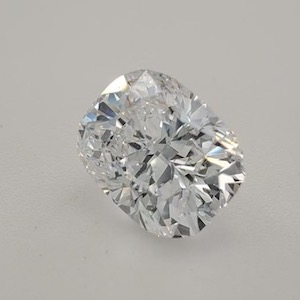
It was called “Diamond Row.” Soon after Canada’s Northern Territories began producing diamonds in 1998, a slew of companies opened polishing factories near the Yellowknife Airport, hoping to establish Canada as a cutting center.
They were “amazing facilities,” says Benjamin King, CEO of Diamonds de Canada. And by 2009, they had all closed. Despite periodic efforts to revive Canadian cutting, it’s been mostly dormant for the last decade.
The old cutters “thought they could just take what they were doing in China and India and pick it up and stick it in Yellowknife,” says King. “The labor structure is different up there. The skill set is different. A polisher in Yellowknife will be considerably more expensive than a polisher in Surat in India.”
But there are signs that the Canadian cutting industry may be stirring back to life. In 2018, the Northwest Territories government adopted a new Diamond Policy Framework, which allowed it to christen certain companies “approved NWT diamond manufacturers.”
So far, two companies have signed up: Diamonds de Canada and Almod Diamonds, owner of the Diamonds International chain, which bought a factory formerly owned by Tiffany & Co. in 2016.
Almod could not be reached for comment. But Diamonds de Canada—which is backed by RDI Diamonds CEO Michael Indelicato—has taken a different tack than its predecessors. (It’s also not on Diamond Row.)
“We can’t compete with India and China,” King says. “You have to think on a completely different wavelength. We researched technologies in the diamond space and outside the diamond space to create a unique approach to diamond manufacturing.”
The new factory, which cost over $3 million, uses robotics to scan, plan, and cut the rough, with proprietary software linking those steps together.
“[We want to] minimize that human touch as much as possible,” he says, though the company still needs people to work the machines and complete the polishing. For that, it’s used local polishers who are already trained. “There’s a polishing community up here. It’s just been dormant. But there are some amazing polishers here.”
Still, the factory hopes to develop technology to automate that final step.
Being so mechanized would seem to defeat the primary reason Canada wanted a cutting industry in the first place: local employment. King believes this factory will “attract the right jobs, jobs that fit the skill set.”
Veteran cutter Maarten de Witte consulted on the project and was impressed by the technology.
“It’s superfine accuracy, way more advanced than the old machines that everyone uses,” he says. “This is not just a play to get rough [from mines]. It’s really a play to see if this technology will work.”
If it does, that could open up manufacturing in different places, “particularly America, which is not so dependent on cheap labor,” he says.
But de Witte sees the technology as working mostly for bigger, better diamonds, which this venture intends to specialize in.
“With smaller diamonds, you can’t compete on labor and finishing,” he says. “You can’t have a million-dollar machine putting out melee. That doesn’t compute. What does compute is bigger, really well-made fancies. [Until now,] high-performance diamonds have not been cost-effective for most people.”
The company intends to sell these well-cut diamonds with reports from the American Gem Society’s laboratory. “We are very passionate about light performance and getting the perfect cut,” says King.
The diamonds will come from Canada’s three diamond mines—Ekati, Diavik, and Gahcho Kué—with the Northwest Territories certifying their origin. “They will be blockchained all the way through the pipeline,” King says, adding that production has already begun. “We are pretty much off to the races, though it’s still a drop in the bucket compared to what comes out of India.”
King hopes his “boutique” product will be to the diamond industry “what [high-end California vineyard] Screaming Eagle is to the wine industry.
“We are here to really tell the story of the diamond,” he says. “The land that it came from and the lives that it touches. We want to tell the story of what a diamond contributes to all the hands along the way.
“Canada produces some of the most amazing rough in the world. We want to be similar to the wine business, where each location has something different to add to the world.”
Top: A sample diamond from the new Diamonds de Canada factory (photo courtesy of Diamonds de Canada)
- Subscribe to the JCK News Daily
- Subscribe to the JCK Special Report
- Follow JCK on Instagram: @jckmagazine
- Follow JCK on X: @jckmagazine
- Follow JCK on Facebook: @jckmagazine






